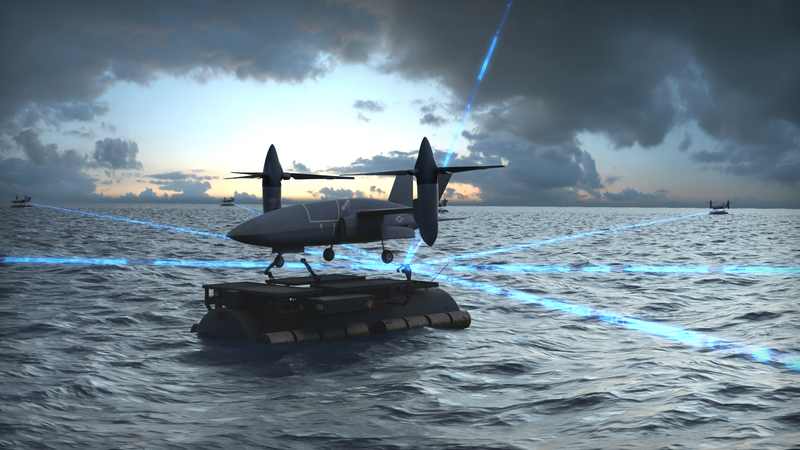
High-speed, sea-based UAS capable of hovering and landing would rearm and refuel from prepositioned rafts in areas where land bases are denied by an enemy.
Credit: Bell
Bell has released a concept for a sea-based, high-speed uncrewed aircraft system (UAS) that can rearm and reload itself on floating rafts. The concept was released as part of Bell’s confirmation on Nov. 27 of a contract award from DARPA for the Speed and Runway Independent Technologies (Sprint) X...
Subscription Required
This content requires a subscription to one of the Aviation Week Intelligence Network (AWIN) bundles.
Schedule a demo today to find out how you can access this content and similar content related to your area of the global aviation industry.
Already an AWIN subscriber? Login
Did you know? Aviation Week has won top honors multiple times in the Jesse H. Neal National Business Journalism Awards, the business-to-business media equivalent of the Pulitzer Prizes.





